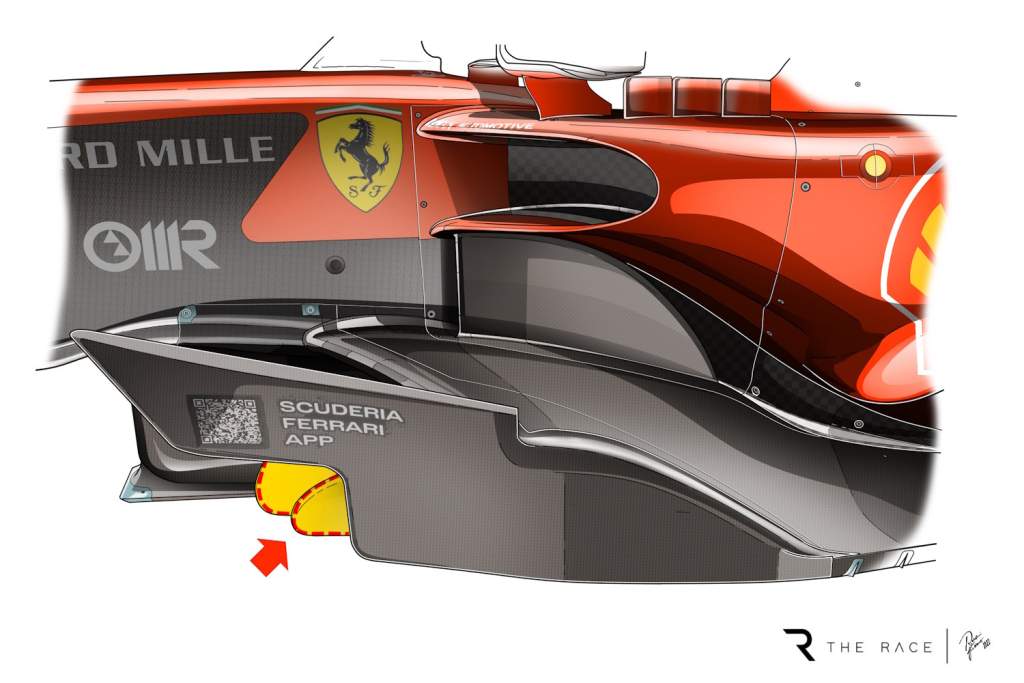Up Next

Ferrari introduced some subtle changes to its Formula 1 car for the Austrian Grand Prix, albeit nothing compared to what McLaren brought to the show.
That means I wouldn’t have expected a huge performance gain, but in qualifying for the grand prix – which is the most representative dry running we’ve had so far this weekend – Charles Leclerc definitely gave Max Verstappen a hard time. On legal track limit laps, it was nip and tuck.
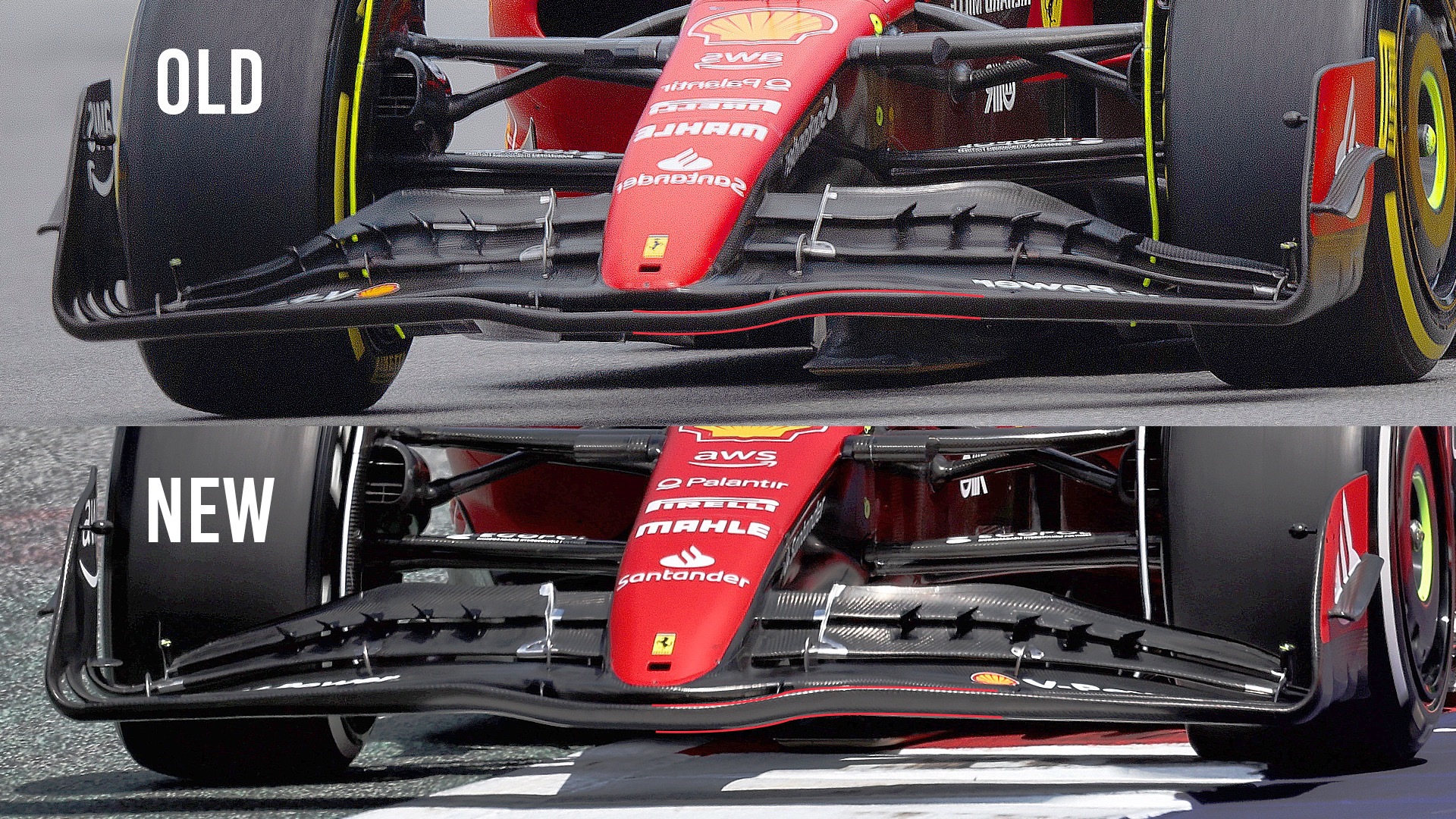
The front wing has changed but I can’t really see a geometry modification that would significantly change its performance. However, looking closer I wouldn’t be surprised if the area marked with the red highlight lines has a thicker leading edge chord.
This could be because Ferrari wanted to reduce how critical this part of the wing was to flow direction coming off a car ahead. Or it could just be that it wanted it to be stiffer and not flex quite as much to either satisfy the FIA load tests or indeed its own internal requirements for deflection to load.
My guess would be that it’s to reduce its sensitivity to airflow direction, especially in the race – when the flow conditions can be altered dramatically when following another car.
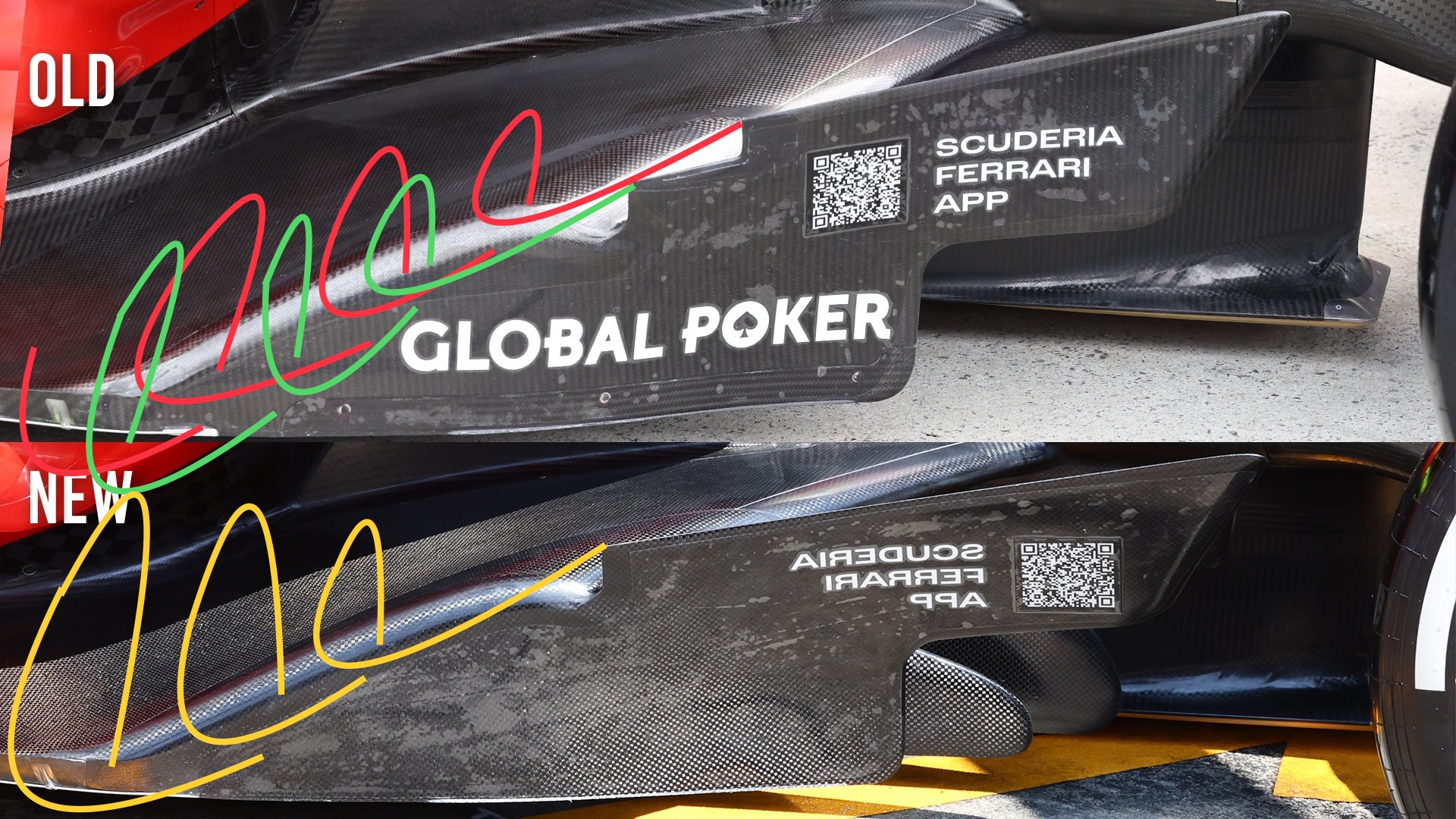
The first area of change that I can really see is these vortex generators on the top of the outer splitter/bargeboard. Ferrari has gone from a twin version (red and green highlights) to a single version (yellow highlights).
Theoretically, the twin version could generate a stronger vortex structure but when the airflow structure changes when following another car they could also crash with each other and reduce their intensity.
The single version should be more robust with changing flow conditions.
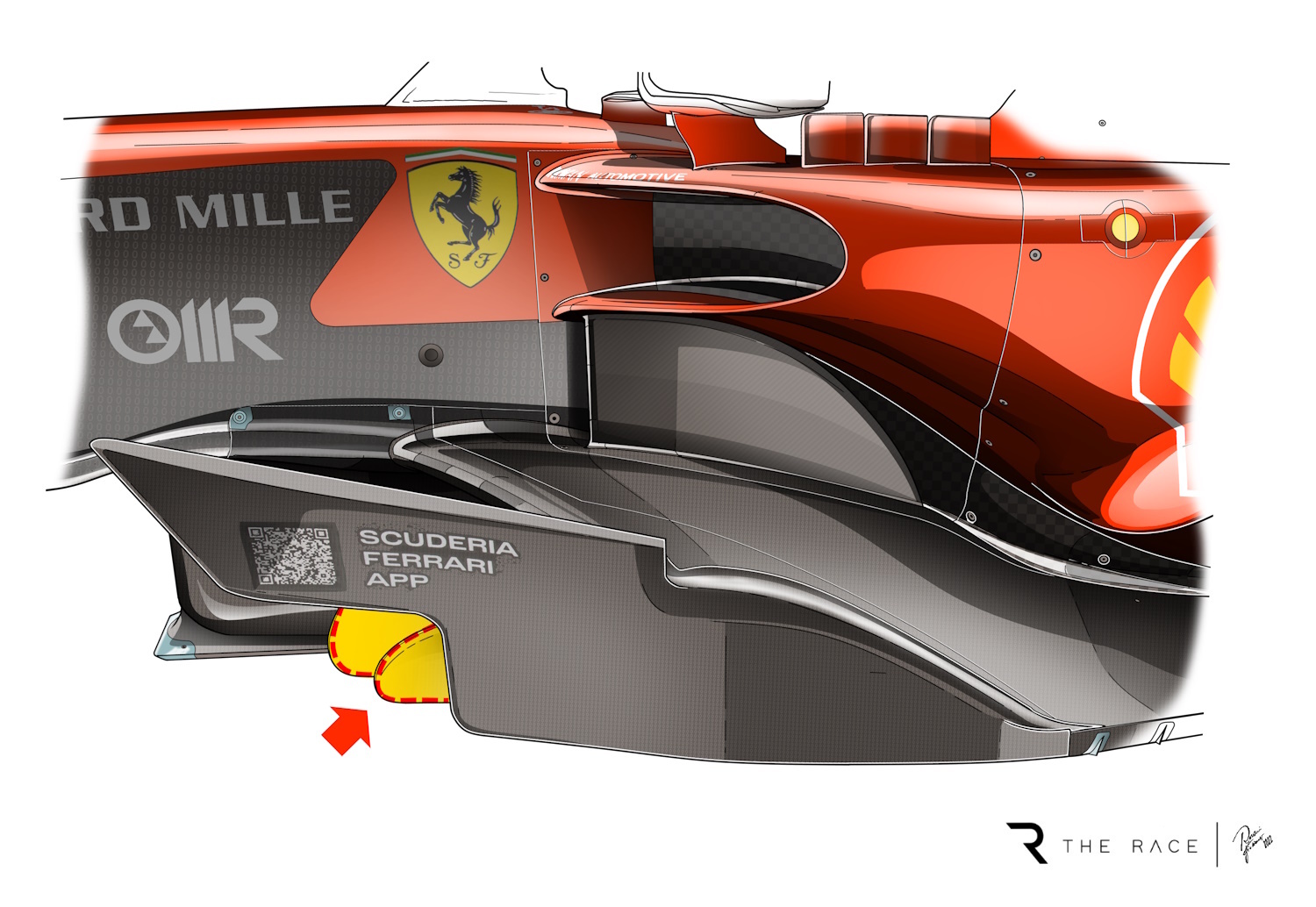
Ferrari has also altered the geometry of the internal underfloor leading edge splitter.
Instead of being a vertical leading edge, it has now gone to a radiused leading edge.
This means that where the splitter’s lower edge faces the track surface, it is more or less in the same position. But where it meets the underfloor leading edge surface, it will be further rearward.
This will mean that the inlet volume between these splitters won’t be so critical and the pressures between them can equalise. Again, this could be beneficial with changing air flow conditions during the race whilst in traffic.
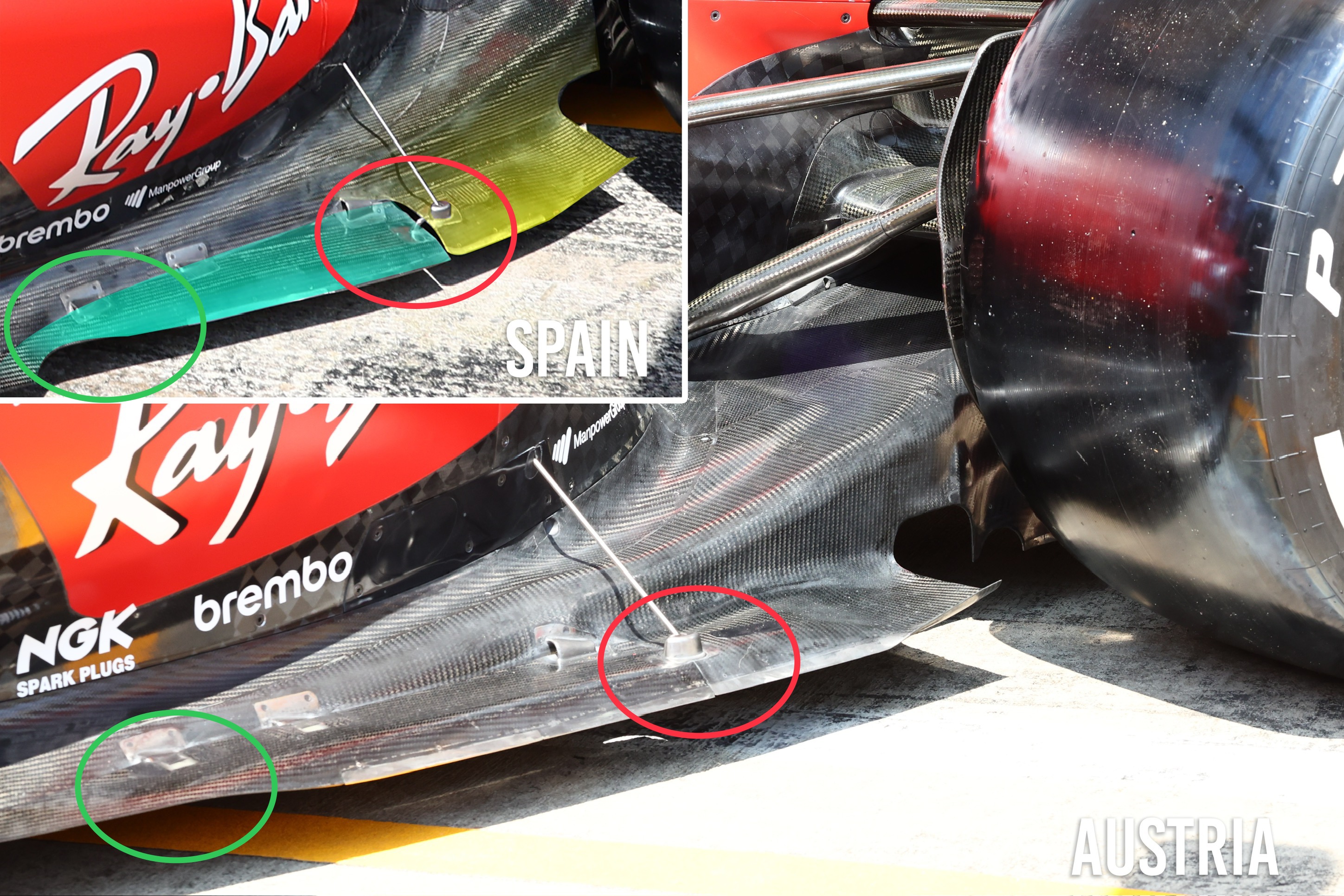
Like McLaren, Ferrari has removed the small inlet duct (red ellipse) that feeds the tyre squash inside the rear tyre and generates an air cushion under that flat section of the outer edge of the floor detail.
Further forward on this outer edge of the floor, Ferrari has also reduced the aggressiveness of this small exit duct (green ellipse), which is at the leading edge of the horizontal vane (green shading).
That is an extension of the floor edge, but creates a small slot gap to allow the vortices that are developed further forward to help seal the underfloor.
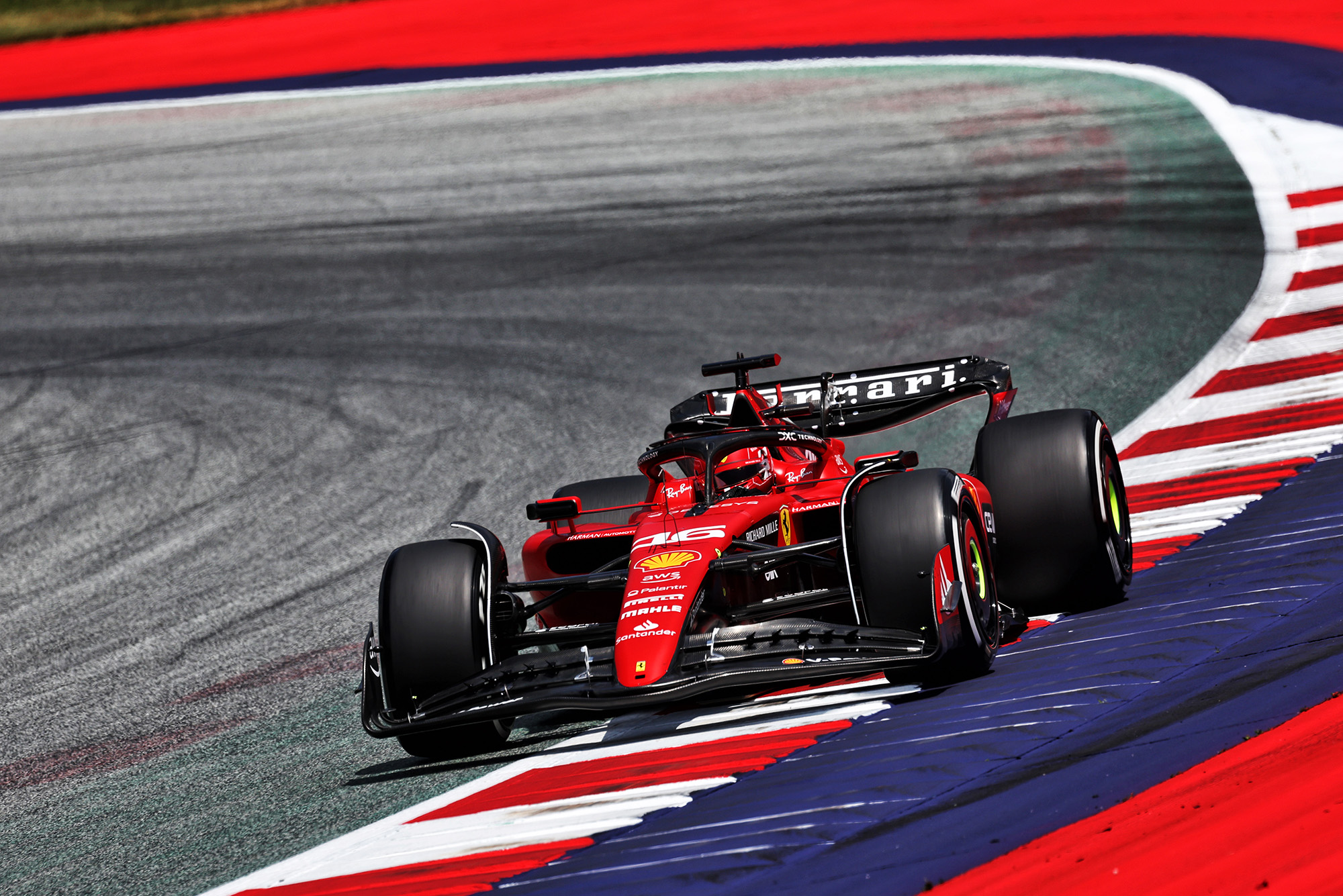
All these changes could be to improve the performance of the underfloor for this Austrian track, which really has no super high-speed corners. That’s despite the Ferrari drivers feeling the SF-23 had improved in the quick turns.
Yes, the last two corners are anything but slow but compared to somewhere like Turn 3, Turn 9 or the last two corners at Barcelona, they are pretty slow so the edges of the floor never get to a critical height to the track surface.
From what I see these changes are to try to improve the car in race conditions when in traffic.
It’s the old question: do you go for out-and-out speed and hopefully qualify on pole and be in a position to run the first 20, possibly 30 laps with no traffic?
Or do you accept that F1 is at its most competitive for years and you will be very lucky to be on pole so making your car better in traffic could just be beneficial on race day?
We will need to see a couple of races to see if these solutions have worked as anticipated.


